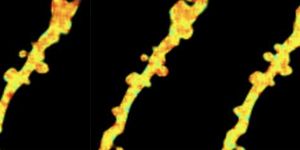The 3D Structures of Bacterial DNA, Revealed
Within the nucleus of each cell are the blueprints for life, DNA, and it has to be carefully organized into chromosomes not only for a good fit but also in order to properly regulate genes. Chromosomes have can be long strings with ends like in plant and animal cells, or circular in bacteria. New work has been published by researchers led by Luis Serrano, ICREA research professor and leader of the Design of Biological Systems laboratory at the Centre for Genomic Regulation, who created a map of chromosomal organization in bacteria, and confirmed their findings with super-resolution microscopy.
The work, published in Nature Communications and performed by a collaboration of scientists in Spain, Japan and Australia, focused on the tiny genome of Mycoplasma pneumoniae, the pneumonia pathogen. It has a circular chromosome that is five times smaller than that of Escherichia coli, a microbe that lives in the gastrointestinal tract. The researchers utilized a technique called Hi-C to reveal how different pieces of DNA interact, subsequently creating a thee-dimensional visualization of the Mycoplasma chromosome that they then were able to match to data they obtained through microscopy.
"Studying bacteria with such a small genome was a big technical challenge, especially because we were using super-resolution microscopy, and it took us five years to complete the project," said lead author of the work Marie Trussart.
The Mycoplasma chromosome is always organized in the same way - a region called the Origin, which is where the initiation site of DNA copying is located, is consistently placed at one end of the structure, while the midpoint of the chromosome is put at the other end. That arrangement is similar to what is seen in some other big bacteria.
The researchers also utilized Hi-C to learn more about the specifics of Mycoplasma genome organization, going beyond the two-dimensional sequence of the gene to reveal more about how three-dimensional patterning in genome structure contributes to gene regulation. Studies have shown that there are complex systems of organization in genomes; some regions of the genome cluster together, forming gene domains that get activated or deactivated together. Researchers had not anticipated finding these sorts of structures in the small genome of Mycoplasma, which only has about 20 proteins that functions in chromosome organization (compared to hundreds of such genes in other bacteria). Additionally, the investigators learned that the Mycoplasma genome structure also arranges genes into domains that are turned on and off together.
"We had suspected that the Mycoplasma genome might have a similar overall organization to other bacteria, but we were completely surprised to find that it was also organized into domains, which can be considered as regulatory units of chromatin organization and that we had identified a previously unknown layer of gene regulation. This research shows that the organization and control of genes cannot be understood by just looking at the linear sequence of DNA in the genome. Indeed, to get the full picture of gene regulation we need to look at the three-dimensional organization of the chromatin that also coordinates gene activity," said Trussart.
The scientists at CRG have been investigating Mycoplasma pneumoniae (featured in the video above) to learn the details of every characteristic from metabolism to genetics. They are especially interested in the control and manipulation of genes in bacteria that have been genetically engineered; such work could have important applications in both industry and medicine.
Learn more about how to perform the Hi-C technique in this Journal of Visualized Experiments publication.
Sources: AAAS/Eurekalert! via CRG, Nature Communications








